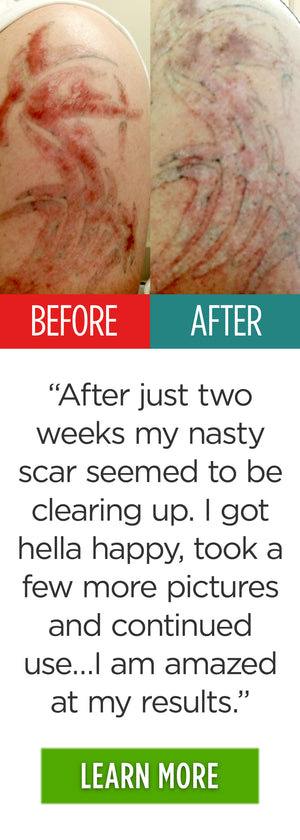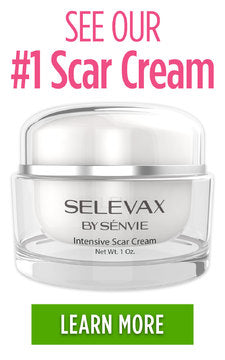Acne Scars 101 - A Guide to Acne Scarring and Acne Scars Treatment
Posted on 08 December 2017 by Maryanne Johnson
Share this post
Acne Scars 101
For many people, adolescence is a difficult time period that they would rather forget, but for those who suffered an adolescence that included acne, the scars can stick around as a nightmarish reminder of a time preferably left in the past.
What Causes Acne Scars?
While some people who suffer bouts of acne will maintain a complexion that’s relatively unscathed, for others, even slight bouts of acne can cause permanent scarring.
Acne scars are most often the result of a person’s response to inflammation. According to experts, those with a healthy inflammatory response are less likely to scar, while those who have what is called a secondary inflammatory response, which often leads to an irregular production of collagen at the site of the trauma, are more likely to scar.
Most experts recommend leaving acne alone, although it can be almost impossible not to pop a pimple, especially large, unsightly zits. While popping a zit not and then is not likely to lead to major scarring, the picking that follows – usually just as uncontrollable an urge as the initial popping – is what leads to skin trauma that triggers inflammation.
Take a peek at this post for a list of the best acne scar removal creams.
Types of Acne Scars
 Like traumatic adolescent memories, there are several different types of acne scars, including:
Like traumatic adolescent memories, there are several different types of acne scars, including:
- ICE PICK SCARS. Ice pick scars are deep holes in the skin that appear to be punctures. They are caused when the body fails to produce enough collagen in response to the injury, leaving behind a depressed scar. Ice pick scars are, according to NYC-based plastic surgeon Dr. Gerald Imber, “the most difficult to correct.”
Treatment options: Ice pick scars can be treated with skin grafts followed by laser treatment, or through a procedure that punches out the skin around the scar, allowing the skin around it to be sutured closed, erasing the depression. Treatments that help encourage the production of collagen can also help ease ice pick scars.
- BOXCAR SCARS. Boxcar scars are similar to ice pick scars, but they are usually larger and less rounded than ice pick scars. They are also the result of low levels of collagen production at the time the scar was formed.
Treatment options: A variety of treatments including laser resurfacing can help new collagen form beneath the surface of the skin, filling in the depressed area. Chemical peels and products with retinol can also boost collagen production and speed cell turnover, so healthier skin is revealed faster. Injectable fillers are also an option for some depressed scars, but they are most effective for a single scar, according to NYC-based plastic surgeon Dr. Jennifer Levine.
- ROLLING SCARS. Rolling scars are named because the skin’s surface takes on the appearance of hills and valleys. They are less severe than other depressed scars, but are also caused by low levels of collagen production.
Treatment options: According to Dr. Imber, a process called micro needling, which triggers the body’s natural healing process, leading to fresh collagen production in the area where the scarring has occurred. By building up the collagen beneath the depression, the depressed layers become even with the surface of the skin, Imber told Reader’s Digest in an interview.
- KELOID SCARS. The opposite of depressed scars, keloid scars are raised scars that are the result of the overproduction of collagen. They are sometimes discolored, and take on red tones with lighter skin and pink tones in darker skin.
Treatment options. There are a variety of treatment options for keloid scars, including products that include silicone, which helps create a healing environment for scars, as well as injectables such as steroids, which can flatten raised skin. Topicals can also reduce discoloration, experts say.
- HYPERPIGMENTATION. One of the most common forms of acne scars are dark spots that are left behind after a blemish has faded.
Treatment options: Topicals that help slough away the surface layer of skin while lightening dark spots can help reduce scarring. Laser treatments are also an option.
- COMBINATION SCARS. In most cases, those who suffer from acne-related scarring often have more than one type of scar, requiring more than one type of treatment to help improve the appearance of those scars.
Treatment options: The latest in laser treatments help boost collagen production, which improves the look of depression scars, and topicals with silicone and natural forms of glycolic acid can help lift away surface cells while creating an environment that is more conducive to healing.
Do Scar Treatment Options Work?
Acne scars can have a seriously negative impact on one’s self-esteem, so people with such scars likely put a lot of faith in the effectiveness of the products or treatments they choose.

But are those treatments effective? In most cases, yes, says one expert, as long as people begin treatments without expecting perfect results, or expecting those results instantly.
“Every scar can be improved,” NYC-based dermatologist Dr. Judy Hellman told Reader’s Digest magazine.






1 comment
I love this post, acne scars suck and this helps me lots….